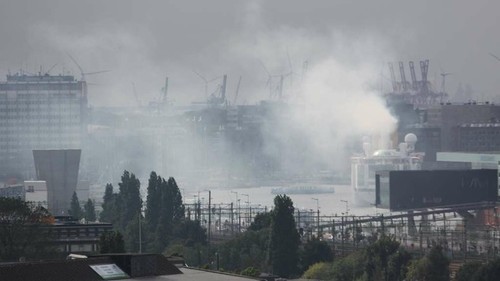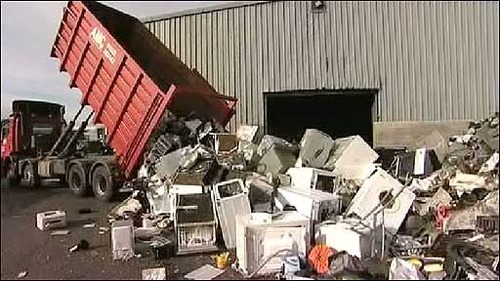• Illegal waste trade is a serious crime that seems to be increasing in the EU.
• Detection and reporting of illegal movements is currently inadequate and appears to reflect only a fraction of the true levels of activity.
• Intensification and harmonisation of inspection activities across the EU are important measures needed to combat illegal movements of waste.
 |
| Image: www.eea.europa.eu |
Illegal movements of waste are notoriously hard to identify and prevent. Illegal movements are a matter of serious concern in Europe because they have several serious consequences, specifically:
• adverse effects on the environment and human health during transport and in receiving countries;
• channelling income to criminals or organised crime;
• unfair competition to law-abiding waste producers, treatment facilities and traders;
• possible loss of valuable resources if the waste is dumped or treated without respecting environmental and health protections in the receiving country;
• high future costs to address the environmental and human harm in receiving countries.
Illegal trade in waste can arise when higher profits are expected compared to legal options of recycling or disposal, combined with regulatory or enforcement failure. The overall growth in international trade also enhances the opportunities for illegal trade. In some cases, waste might be labelled as exports for recycling but is in fact illegally disposed of ('sham recycling'); with the growing amount of exports for recycling, it seems that this type of illegal activity has also increased.
The use of economic instruments to discourage waste disposal, such as landfill taxes, can incentivise illegal shipments if they are not accompanied by efforts to build up other waste management options (OECD, 2012).
The nature of illegal waste trade means that it will never be possible to get an accurate picture of all activities. Clearly, the number of cases detected depends not only on the amount of illegal activities but also on the inspection frequency and strategy.
EU Member States must report instances of illegal movements to the European Commission and during 2007–2009 around 400 cases were reported. Some may have been reported twice — by both the exporting country and the importing country. Half concerned transactions to or from countries outside the EU. Germany, the Netherlands, Belgium, the United Kingdom and Austria accounted for 70 % of the reported cases (EC, 2012). Seven Member States did not report at all, and the remainder reported that they did not detect any illegal shipments. This indicates that the 400 cases represent only a part of the true number.
 |
| Image:BBC |
Europol has identified an increase in the volume of illegal waste movements across borders, which has become one of the fastest growing areas of organised crime. The main routes of illegal movements are from southern to south-eastern Europe and the western Balkans. Illegal waste trade is often facilitated through cooperation with established sectors such as import and export firms, metal recycling and financial services. Corruption also plays a role, for example laboratories issuing false certificates. WEEE and end-of-life vehicles are sent to West Africa, often in combined shipments, via ports in north-western Europe (Europol, 2011).
During a coordinated inspection campaign throughout 2008–2011 involving 22 European countries, the European Union Network for the Implementation and Enforcement of Environmental Law (IMPEL) found that 19 % of inspected shipments were in violation of the EU Waste Shipments Regulation. Of those, 37 % were illegal shipments. The inspections were targeted, so this number is not necessarily representative for all shipments (IMPEL, 2011). IMPEL is continuing to run and plan further cooperation, training and inspection activities to combat illegal waste shipments.
In 2011, the European Commission consulted stakeholders and the public on possible EU legislative criteria and requirements for waste shipment inspections (EC, 2011a). The responses largely demonstrated the need for measures to strengthen inspection at the EU level, including ensuring the traceability of waste, providing guidance to help customs officials differentiate between used goods and waste, and improving coordination of waste shipment enforcement at EU level (EC, 2011b). The Commission is currently assessing the impacts of possible future legislative and non-legislative measures to curb illegal movements of waste (EC, 2012).
It could also be worthwhile to explore new technologies to track movements of waste across borders. For example, Taiwan recently introduced better control of hazardous waste movements within the country and across its borders. Enterprises transporting hazardous waste have to install GPS equipment on their trucks, enabling real-time tracking of waste movements (EPA, 2012). Learning from this experience might represent another option to prevent illegal activities.
Source:http://www.eea.europa.eu/












0 comentarios:
Publicar un comentario